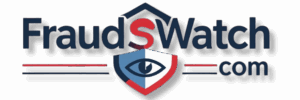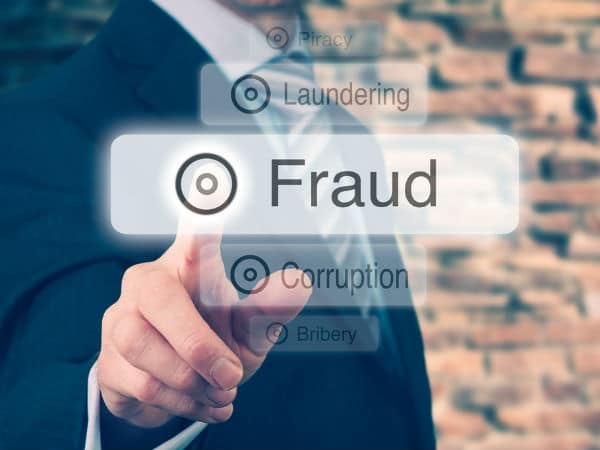Michigan Home Health Agency Pays $334K to Settle Whistleblower Fraud Allegations: A Deep Dive into a Broken System
The Betrayal of Trust: Unpacking the M&Y Care Settlement
In a case that pulls back the curtain on the vulnerabilities within America’s home healthcare system, a Michigan-based provider has agreed to pay hundreds of thousands of dollars to resolve allegations of defrauding the very government programs designed to protect the elderly and infirm. M&Y Care, LLC, headquartered in the Detroit suburb of West Bloomfield, will pay $334,807.20 to the United States and the State of Michigan to settle claims that it violated the False Claims Act, a cornerstone of federal anti-fraud law.
The settlement, announced by the U.S. Attorney’s Office for the Eastern District of Michigan, addresses a stark accusation: for a period spanning eight full years, from January 1, 2015, through December 31, 2023, M&Y Care allegedly billed Medicare and Medicaid for home health services provided by staff who were not properly qualified for the jobs they were performing. This case highlights a disturbing chasm between the compassionate image projected to the public and the alleged reality of a business model that prioritized higher government reimbursements over the guaranteed qualifications of its caregivers.
The Facade of Compassion vs. The Reality of the Allegations
For families navigating the difficult decision of entrusting a loved one to in-home care, a provider’s public promises are paramount. M&Y Care, on public-facing platforms like Care.com, presented itself as a beacon of trust and quality. Founded in 1999, the company’s mission was to deliver “professional quality in-home health care that is safe, effective, compassionate, and affordable”. Their marketing materials assured prospective clients, “At M&Y Care, we choose our nurses, therapists, and personal caregivers carefully to ensure that your family member is provided with the best services”. They positioned themselves as advocates for the “aged, diseased, and disabled population,” recognizing that families want a “highly qualified professional” to treat their loved ones with dignity and respect.
Yet, the allegations leveled by the Department of Justice paint a dramatically different picture. Federal prosecutors contend that this carefully crafted image of professionalism concealed a systematic and prolonged scheme to bill for a higher, more expensive level of care than the company was actually providing. The core of the government’s case is that M&Y Care knowingly caused claims to be submitted to Medicare and Medicaid for services rendered by individuals who were “insufficiently trained” and “lacked the requisite qualifications”.
The long duration of the alleged misconduct—nearly a decade—suggests this was not an isolated series of clerical errors but a fundamental aspect of the company’s billing practices during that time. For the vulnerable patients involved, this raises profound questions that the financial settlement does not answer. Were they put at risk by aides who were not properly trained to handle their medical needs? Did they receive a lower quality of care than what was promised and paid for by taxpayers? This case underscores a critical reality for healthcare consumers: the marketing language of compassion and quality must be scrutinized, as it can sometimes mask practices that fall short of federal and state requirements, potentially compromising patient well-being for financial gain.
The Whistleblower Steps Forward
This alleged scheme may never have come to light without the actions of an insider. The civil settlement explicitly resolves claims brought under the qui tam, or whistleblower, provisions of the False Claims Act. The formal case name, United States and the State of Michigan ex rel. DeCarlo v. M&Y Care, LLC, et al., Case No. 19-11032 (E.D. Mich.), identifies a private citizen, DeCarlo, as the “relator” who initiated the legal action.
This individual served as the catalyst, filing a lawsuit on behalf of the U.S. and Michigan governments to expose the alleged fraud. The case is a textbook example of how the law empowers ordinary citizens with insider knowledge to become the first line of defense against the misuse of taxpayer funds. The subsequent investigation and settlement were the result of a coordinated effort between the U.S. Attorney’s Office, the U.S. Department of Health and Human Services – Office of the Inspector General (HHS-OIG), and the Michigan Attorney General’s Health Care Fraud Division, all sparked by the initial whistleblower complaint. While the settlement document notes that the claims are “allegations only” and there has been “no determination of liability,” the case provides a crucial window into the mechanics of home healthcare fraud and the powerful legal tools used to combat it.
The Anatomy of a Healthcare Fraud: How a Billing Code Becomes a Weapon
At the heart of the M&Y Care case is a fundamental and lucrative deception: the alleged misrepresentation of non-skilled personal care as skilled medical services. This distinction is not merely semantic; it represents a vast difference in provider qualifications, the nature of care delivered, and, most critically, the amount of money Medicare and Medicaid will pay.
Skilled vs. Non-Skilled Care: A Critical Distinction
To understand the fraud, one must first understand the two tiers of in-home care. The Centers for Medicare & Medicaid Services (CMS) draws a bright line between them.
Skilled Care is medically necessary care that can only be provided by, or under the supervision of, licensed or trained medical personnel, such as registered nurses, therapists, or qualified home health aides. This includes services like wound care, intravenous injections, physical therapy, and monitoring a patient’s unstable health status. To be covered by Medicare, these services must be ordered by a doctor for a patient who is certified as “homebound”.
Non-skilled Care, often called “custodial care,” involves assistance with Activities of Daily Living (ADLs). These are personal tasks such as bathing, dressing, eating, and assistance with mobility that do not require a licensed caregiver and can be safely performed by individuals without advanced medical training. While essential for many individuals, Medicare generally does not pay for custodial care if it is the only care a person needs.
The government’s allegation is that M&Y Care provided what was essentially non-skilled, custodial care but billed for it as if it were skilled care, thereby exploiting the system for higher payments.
Deconstructing CPT Code G0156
The specific tool allegedly used in this scheme was the Healthcare Common Procedure Coding System (HCPCS) code G0156. This code is defined as “Services of home health/hospice aide in home health or hospice settings, each 15 minutes”. This is not a generic code for any aide; it is an explicit attestation to Medicare and Medicaid that the service was provided by a qualified home health aide as part of a skilled care plan.
The term “qualified” is not subjective. It is rigorously defined by federal law under the Medicare Conditions of Participation, specifically 42 CFR § 484.80. To bill using this code, a home health agency is certifying that its aides meet these stringent federal standards, which include :
- A minimum of 75 hours of training. This must consist of at least 16 hours of classroom instruction followed by at least 16 hours of supervised practical training in a lab or with a patient.
- Competency in specific subject areas. The training must cover a wide range of topics, including communication skills, infection control, reading and recording vital signs (temperature, pulse, respiration), maintaining a clean and safe environment, recognizing emergencies, and safe techniques for personal hygiene tasks like bathing, grooming, and toileting.
- Successful completion of a competency evaluation. An aide must be evaluated and deemed competent in these areas. If they are found “unsatisfactory” in any task, they cannot perform it without direct supervision until they are retrained and pass a subsequent evaluation.
- Ongoing education. Aides are required to complete at least 12 hours of in-service training every 12-month period to maintain their skills.
The government’s accusation that M&Y Care used “insufficiently trained” staff is a direct challenge to the company’s adherence to these federal mandates. The alleged fraud was not simply a matter of choosing the wrong code from a dropdown menu; it was the act of billing a code that legally certifies a specific, high standard of training and competence that the staff allegedly did not possess. Each time code G0156 was submitted, it was a false statement to the government, claiming a level of qualification that justified a higher payment.
The Financial Motive: A 74% Reimbursement Gap
The incentive for this alleged misrepresentation was stark and substantial. According to the Department of Justice, the reimbursement rate for the non-skilled care that should have been billed was approximately 74% lower than the rate M&Y Care received by using the skilled-care CPT code G0156. This enormous disparity in payment created a powerful financial motive to systematically upcode services. Over eight years and countless patient visits, this percentage difference translates into a significant financial gain for the provider at a direct cost to taxpayers.
The table below clarifies the critical differences at the center of this fraud allegation, providing a guide for any consumer of home health services.
| Feature | Skilled Care (e.g., CPT G0156) | Non-Skilled / Custodial Care |
| Provider Qualifications | Must meet federal training (75+ hours) and competency standards per 42 CFR § 484.80. | No federal training mandate (state laws may vary); can be provided by non-licensed caregivers. |
| Typical Tasks | Simple medical procedures, medication reminders/assistance, wound care, monitoring vital signs, therapy exercises. | Assistance with Activities of Daily Living (ADLs): bathing, dressing, eating, toileting, mobility. |
| Medicare Coverage | Covered if medically necessary, physician-ordered, intermittent, and the patient is certified as homebound. | Generally not covered by Medicare if it is the only type of care the patient needs. |
| Reimbursement Basis | Higher rate reflecting the required skills, training, and medical nature of the service. | Significantly lower reimbursement rate, if covered at all. |
The “Lincoln Law” in Action: A Citizen’s Fight Against Fraud
The M&Y Care settlement is a direct result of one of the most powerful legal instruments in the U.S. government’s arsenal: the False Claims Act (FCA). This Civil War-era law empowers private citizens to act as deputies in the fight against fraud, creating a system of incentives and protections that turns insider knowledge into billion-dollar recoveries for the American taxpayer.
A Primer on the False Claims Act (FCA)
Originally passed in 1863 and nicknamed the “Lincoln Law,” the FCA was President Abraham Lincoln’s response to rampant fraud by contractors who were selling the Union Army faulty rifles, sick mules, and spoiled rations. Its purpose today remains the same: to hold accountable any person or entity that knowingly submits, or causes to be submitted, false claims for payment to the government.
The law’s power lies in its severe financial penalties. A party found liable under the FCA must pay up to three times the government’s actual damages, plus substantial civil penalties for each individual false claim submitted. These per-claim penalties are adjusted for inflation and can range from approximately $11,000 to over $23,000. In a case like M&Y Care’s, which allegedly spanned eight years, the number of false claims could be in the thousands, making the potential penalties astronomical and creating strong leverage for the government to secure settlements.
The Qui Tam Lawsuit: How a Whistleblower Sues for the Government
The most unique feature of the FCA is its qui tam provision. The term comes from the Latin phrase qui tam pro domino rege quam pro se ipso in hac parte sequitur, meaning “he who brings an action for the king as well as for himself”. This allows a private citizen with evidence of fraud—known as a “relator”—to file a lawsuit on behalf of the United States. The M&Y Care case, brought by the relator DeCarlo, followed this precise path.
The qui tam process is highly specialized and designed to protect both the whistleblower and the integrity of the investigation :
- Hire an Attorney: The law requires that a relator be represented by legal counsel to file a qui tam suit. This ensures the complex legal requirements are met.
- File Under Seal: The lawsuit is filed secretly, or “under seal,” in federal court. The complaint is not served on the defendant and remains confidential from the public. This critical step prevents the alleged fraudsters from destroying evidence or intimidating witnesses once they learn of the investigation.
- Government Investigation: The Department of Justice (DOJ) and relevant agencies are served with the complaint and a written disclosure statement detailing the whistleblower’s evidence. The government then has an initial 60-day period—which is almost always extended, often for many months or even years—to investigate the claims. During this time, investigators may interview the relator, review documents, and use their subpoena power to gather more information.
- Intervention or Declination: After its investigation, the government must decide whether to “intervene” and take over the primary prosecution of the case, or “decline.” A government decision to intervene, as happened in the M&Y Care case, signals that it believes the case has merit and significantly increases the likelihood of a financial recovery. If the government declines, the relator has the option to pursue the case on their own.
This structure creates a powerful public-private partnership. The government often lacks the internal visibility to detect fraud, while insiders possess the crucial “original information” but lack the authority to prosecute. The FCA bridges this gap, using the whistleblower as its eyes and ears and the DOJ as its legal hammer. The statistics bear this out: in fiscal year 2024, whistleblower-initiated cases were responsible for over $2.4 billion of the $2.9 billion recovered by the government under the FCA.
Incentives and Protections: The Whistleblower’s Reward
To encourage individuals to take the significant personal and professional risks associated with blowing the whistle, the FCA provides two powerful incentives: a financial reward and protection from retaliation.
The Financial Reward: A successful relator is entitled to a share of the money recovered by the government. The percentage depends on the government’s level of involvement :
- If the government intervenes, the relator’s award is between 15% and 25% of the recovery.
- If the government declines, and the relator proceeds alone to a successful outcome, the award is higher, between 25% and 30%.
In the M&Y Care settlement of $334,807.20, where the government clearly intervened, the whistleblower DeCarlo would be eligible for a reward ranging from approximately $50,221 to $83,701. This reward system ensures that individuals who expose fraud are compensated for their crucial role in protecting the U.S. Treasury.
Anti-Retaliation Protections: The FCA makes it illegal for an employer to fire, demote, harass, or otherwise discriminate against an employee for taking lawful actions in furtherance of an FCA case. A whistleblower who suffers retaliation can sue for relief, which may include reinstatement to their job, double the amount of back pay with interest, and compensation for other damages, including legal fees. These protections are vital, as they give potential whistleblowers the confidence to come forward without fear of losing their livelihood.
A Drop in the Ocean: Contextualizing the National Healthcare Fraud Epidemic
While the $334,807 settlement from M&Y Care represents a significant local victory for taxpayers, it is merely a single data point in a national crisis of staggering proportions. Healthcare fraud is an epidemic that drains tens of billions of dollars from the U.S. economy annually, diverting critical funds from patient care and driving up costs for everyone.
The Staggering National Statistics
The scale of the problem was laid bare by the 2025 National Health Care Fraud Takedown, a coordinated enforcement action by the Department of Justice and its partners. The results were record-breaking: criminal charges were filed against 324 defendants for their roles in schemes that allegedly caused over $14.6 billion in intended losses to federal health programs. This figure more than doubles the prior record of $6 billion from a previous takedown, illustrating the escalating nature of these crimes.
Disturbingly, this is not a crime confined to shadowy criminal enterprises. The 2025 takedown included charges against 96 licensed medical professionals, including doctors, nurses, and pharmacists, who allegedly betrayed their professional oaths to exploit the system for personal gain. While enforcement actions recover billions, the total amount lost to fraud, waste, and abuse each year is difficult to quantify precisely, but conservative estimates place the figure at approximately $60 billion annually.
The Economic Ripple Effect: Who Really Pays for Fraud?
Healthcare fraud is not a victimless crime against a faceless government bureaucracy. Its costs ripple through the entire economy, and its primary victims are the very people the system is meant to serve: patients and taxpayers.
- Taxpayers: Every dollar stolen from Medicare and Medicaid is a dollar funded by American taxpayers through payroll and income taxes. This massive financial drain depletes the trust funds that millions of seniors and low-income families rely on, forcing the government to either raise taxes, cut benefits, or reduce spending on other essential public services to cover the shortfall.
- Patients: The human cost is even more alarming. Patients are subjected to medically unnecessary tests and procedures that can cause direct physical harm. In the M&Y Care case, patients may have received substandard care from unqualified aides. Furthermore, fraudulent activities lead to falsified medical records, which can result in incorrect diagnoses and dangerous treatments for years to come. This erosion of trust can also deter patients from seeking necessary care.
- The Healthcare System: Fraud poisons the entire ecosystem. It drives up insurance premiums for individuals and employers, making healthcare less affordable for everyone. It also creates a distorted market where honest providers who follow the rules struggle to compete with fraudulent actors who can offer kickbacks or operate with artificially low overhead.
Common Home Healthcare Fraud Schemes
The upcoding and use of unqualified staff alleged in the M&Y Care case is just one of many schemes used to defraud home healthcare programs. Other common tactics include :
- Phantom Billing: Billing Medicare or Medicaid for home visits, therapy sessions, or nursing services that were never actually provided.
- Illegal Kickbacks: Home health agencies paying doctors, hospital discharge planners, or marketers for patient referrals, a clear violation of the Anti-Kickback Statute.
- Falsifying Patient Conditions: Exaggerating a patient’s medical condition in official documentation to falsely certify them as “homebound” or in need of skilled care to qualify for Medicare reimbursement.
- Billing for Unnecessary Services or Equipment: Providing and billing for services or durable medical equipment (DME) that are not medically necessary for the patient’s condition.
The sophistication of these schemes is constantly evolving. The 2025 Takedown revealed fraud operations involving transnational criminal organizations using cryptocurrency to launder money and even deploying artificial intelligence to generate fake audio recordings of patient consent. This technological arms race has prompted a parallel evolution in law enforcement. The DOJ has established a new Health Care Fraud Data Fusion Center to leverage AI and advanced data analytics, aiming to spot billing anomalies and emerging fraud trends proactively. While the M&Y Care case was exposed by a human whistleblower, the future of fraud enforcement will undoubtedly be a hybrid approach, combining the irreplaceable inside knowledge of whistleblowers with the immense processing power of artificial intelligence.
Your Family’s First Line of Defense: A Guide to Spotting and Reporting Fraud
While federal and state agencies are ramping up enforcement, the most immediate and effective line of defense against home healthcare fraud is often the patient and their family. Vigilance is not just a right; it is a crucial responsibility. By learning to recognize the warning signs and knowing how to report suspicious activity, you can protect your loved ones, safeguard your own medical and financial information, and help preserve the integrity of the healthcare system for everyone.
Recognizing the Red Flags
Fraudulent activities often leave a trail of clues. Being aware of these red flags can help you identify potential problems early. The following checklist, compiled from guidance by government agencies and healthcare experts, can serve as your guide.
| Category | Red Flags to Watch For | |||
| Billing & Paperwork | Charges on your Medicare Summary Notice (MSN) or Explanation of Benefits (EOB) for services, visits, or equipment you never received. | Billing for more hours of care than were actually provided. | Dates of service listed for days when you were in the hospital or out of town. | The agency bills for services after you have been discharged or have discontinued care. |
| Provider Behavior | A doctor you have never met or only spoken to briefly on the phone signs the order for your home health care. | The agency offers “free” items like groceries, transportation, or cash in exchange for your Medicare number. This is a strong indicator of an illegal kickback scheme. | You feel pressured to accept services or medical equipment that you do not believe you need. | You are asked to sign blank or incomplete forms that the agency says it will “fill in later”. |
| Care Quality | The home health aide seems uncertain or untrained in performing basic tasks like taking vital signs, assisting with mobility, or personal hygiene. | The agency cannot or will not provide you with documentation of an aide’s training, certification, or qualifications when you ask. There is a high turnover of caregivers with little or no explanation or introduction of the new aide. | ||
| Unsolicited Contact | You receive unsolicited phone calls, emails, or texts from someone claiming to be from Medicare asking for your Medicare number, Social Security number, or bank information. Medicare will never call you and ask for this information unless you have called them first. | A salesperson pressures you to switch to a new plan they claim is “preferred by Medicare.” Medicare does not endorse specific plans. | You receive a medical device or testing kit (like a genetic testing kit) in the mail that your doctor did not order. Do not accept the delivery or use the kit. |
How to Report Suspected Fraud: A Step-by-Step Guide
If you encounter any of these red flags or suspect that you or a loved one has been a victim of healthcare fraud, it is vital to report it. The M&Y Care case demonstrates that a single report from one individual can trigger a major government investigation and hold providers accountable.
Step 1: Gather Information Before you make a report, collect as much specific information as possible. This includes:
- The name of the home health agency and any individuals involved.
- The patient’s Medicare or Medicaid number.
- The specific dates of service in question.
- A clear description of why you believe fraud has occurred.
- Copies of any relevant documents, such as EOBs, MSNs, or bills.
Step 2: Contact the Authorities You have several avenues to report suspected fraud. You can choose to remain anonymous.
- Federal HHS Hotline: Report directly to the U.S. Department of Health and Human Services, Office of the Inspector General (HHS-OIG). This is the primary federal body for investigating healthcare fraud.
- Phone: 1-800-HHS-TIPS (1-800-447-8477)
- Online: Submit a complaint online at
https://tips.oig.hhs.gov
- Medicare Hotline: For issues related specifically to Medicare billing.
- Phone: 1-800-MEDICARE (1-800-633-4227)
- State Medicaid Fraud Control Unit (MFCU): Each state has an MFCU dedicated to investigating and prosecuting Medicaid fraud. You can find the contact information for your state’s unit through the National Association of Medicaid Fraud Control Units website or by searching online for ” Medicaid Fraud Control Unit.”
The fight against healthcare fraud is a collective responsibility. While law enforcement agencies work to dismantle large-scale criminal operations, the vigilance of everyday citizens provides an indispensable layer of protection. The case of M&Y Care, brought to justice by the actions of a single whistleblower, is a powerful reminder that one voice, armed with the truth, can expose wrongdoing, recover taxpayer dollars, and help safeguard a system that millions of Americans depend on for their health and well-being.




